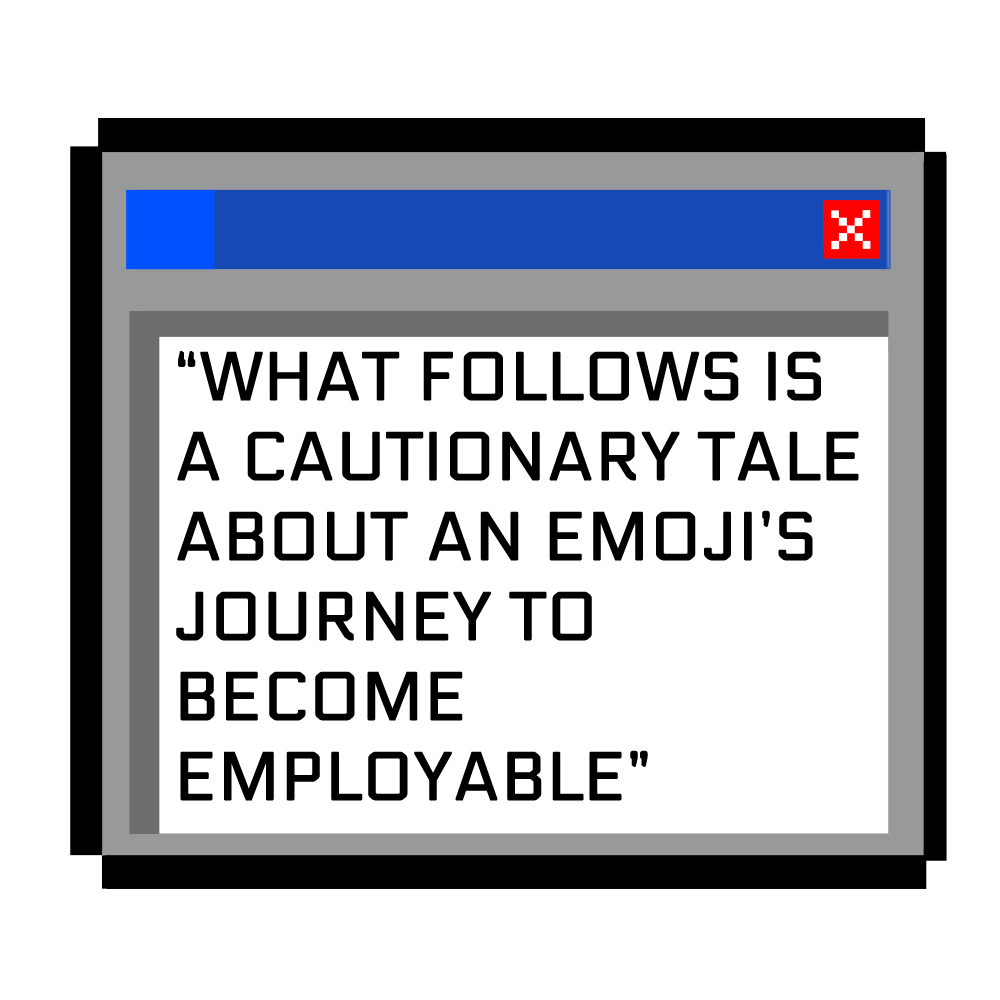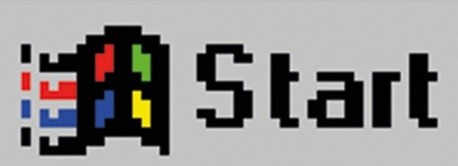In the beginning, God created the heavens and the earth. In 1999, Shigetaka Kurita invented the emoji. 23 years later, the crab emoji would be used to signify celebration in the wake of Queen Elizabeth II’s death. But five years before that, The Emoji Movie was released, a miraculous achievement that makes The Communist Manifesto look like an editorial by the Monopoly Man for the National Post.
Directed by Tony Leonidis, the film is a rare rebuttal of the movie-goer who views films as purely financial enterprises. Under the facade of an animated feature film, The Emoji Movie dares to accomplish a striking, post-modern anticapitalist message, challenging the status quo with metafictional gusto.
Gene, voiced by T. J. Miller, is a 'meh' emoji living in Textopolis, a pixelated world inside freshman high school student Alex’s smartphone. All emojis work at the Emoji Bar, where they have no set hours and their biometric data is collected every day. Whenever Alex selects an emoji, their face is scanned and sent up to his text message box.
But Gene has a dangerous secret: he’s nonconforming and able to transform his expression beyond just meh. When his ability is exposed, Textapolis’ dictatorial ruler, Smiler (Maya Rudolph), declares Gene a malfunction and commands her police bots to delete him. If the meh emoji cannot meh as required, it is unable to perform its singular function of labour—the reason why it exists.
At one point, she fashions a noose and hovers it over his head. Children are never too young to learn about lethally violent autocrats.
As Gene narrowly escapes state-endorsed death, he runs into the open palm of James Corden, playing an unused high-five emoji with the eyes and charm of a dead chihuahua. Together, the pair embark on a journey to find a hacker who can reprogram Gene’s glitch and add High-Five to Alex’s emoji favourites section—finally giving Corden’s character a sense of purpose, while hopefully finding him a heart, The Wizard of Oz-style.
What follows is a cautionary tale about an emoji’s journey to become employable. The duo eventually ropes in coder Jailbreak (Anna Faris), a girlboss-sk8r grrl hybrid who claims men always take credit for women’s ideas, although the speaker and listener are neither men nor women. They are both emojis. Gender norms are nevertheless a pixelated prison for Jailbreak, who is a former princess emoji hiding her crown under a beanie.
The Emoji Movie strips the art of animation down to the bone. Cutting the difference between Apple and Samsung’s emoji design, the film crash lands somewhere in Uncanny Valley. After all, what is an animated film except a series of moving emojis?
As the trio hop through apps to find their salvation in the Cloud—where Gene and High-Five can apparently be re-programmed—product placement replaces world-building. Dropbox is portrayed as a safe haven, with Jailbreak grandly declaring the app is secure from malware. Clearly, Dropbox paid the big bucks for an advert that no child could appreciate and no parent could tolerate. This propaganda illustrates how commercial needs drive individuals to nonsensical avenues, to the point of alienating viewers.
The older generation of emojis is not spared from the quest against authoritarian capitalism. Somehow, Gene has parents, though the question of reproduction (are emojis birthed or hatched?) is left unanswered. Their marriage cracks open as they search for their fugitive child, until Gene’s father, Mel (Steven Wright), reveals the truth. He, too, can transform beyond just meh. For years, his secret was a suppressed trauma, stemming from the pressure to perform the job he was fated for since he was first animated. This exchange with his wife, Mary (Jennifer Coolidge), is revealed and responded to in perfect monotone. Even in their darkest moments, as they critique the system that led Mel to suppress his true self, the Meh family cannot sidestep the traits expected of them as spherical yellow cogs in the emoji keyboard machine.
Beyond Textopolis, The Emoji Movie plunges into self-conscious metafiction. The entire voice cast acts at a masterly level of anti-work performance art. Make no mistake: everyone is only here to cash their cheques and leave. On all levels of production, it is hard to imagine anyone investing more than 10 minutes of their time. Capitalism chokes the creative impulse whilst seemingly supporting it—and fittingly, there is nothing creative about The Emoji Movie.
Employing James Corden alone was exceptionally uncreative. In a pre-Cats, post-Carpool Karaoke world, Corden was inoffensive and not yet overexposed.
 At various points in the film, his character High-Five languishes in both the Loser Lounge, which is populated by fellow unused emojis and the Trash app. The Emoji Movie was not the first production to bank on Corden’s blandness but it shrewdly foreshadows how he was passed around from film to film like a viral infection until every possible target audience became sick of him. The short-term profit machine built Corden up and predicted his inevitable pop culture decline.
At various points in the film, his character High-Five languishes in both the Loser Lounge, which is populated by fellow unused emojis and the Trash app. The Emoji Movie was not the first production to bank on Corden’s blandness but it shrewdly foreshadows how he was passed around from film to film like a viral infection until every possible target audience became sick of him. The short-term profit machine built Corden up and predicted his inevitable pop culture decline. In a chilling conclusion, the emojis enjoy an office dance party, though we have no idea what’s happened to the dictator Smiler and her army. Jailbreak has reverted to a princess and Gene is essentially a GIF now, confined to the favourites box by choice after helping Alex win the affections of his crush.
I was reminded of George Orwell’s closing lines in 1984: “It was all right, everything was all right, the struggle was finished. He had won the victory over himself. He loved Big Brother.”
Whether emoji or human, freedom escapes us all. It’s a tragic end for our protagonist, who has no idea that in the fight for self-acceptance, he has reduced himself to his capacity to work. “Feel this Moment” by Pitbull featuring Christina Aguilera plays for the second time in the film, but rings eerily hollow.
Currently sitting at a six per cent rating on Rotten Tomatoes, The Emoji Movie was shockingly underappreciated in its time. Yet dismissing it simply as afternoon grub for the iPad generation does a great disservice to the anti-capitalist, anti-work statement on display. Ironically, the film made US$217.8 million worldwide. The box office returns are yet another layer on The Emoji Movie’s postmodern lasagna and a spit in the face of film critics too short-sighted to see beyond the animated surface.
“Who’s laughing now?” I imagine the movie’s producers saying to themselves. It won’t be the audience, because not one of the film’s jokes land. But it will make you think. And after all, isn’t that what’s missing from cinema?

